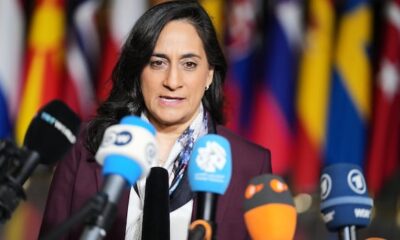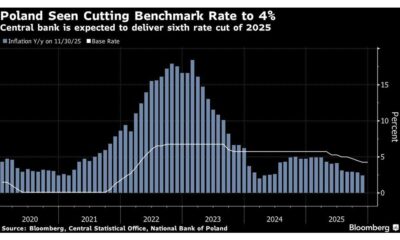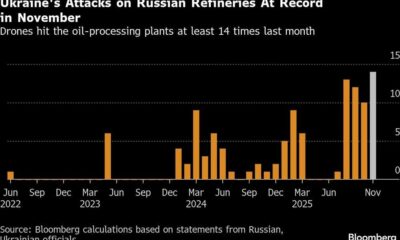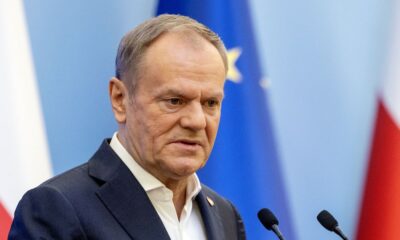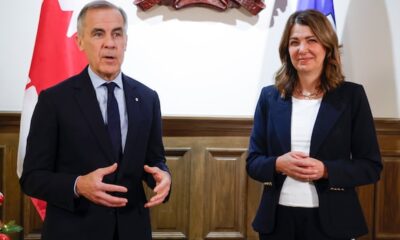World
NATO Responds to Russian Jets Violating Estonian Airspace
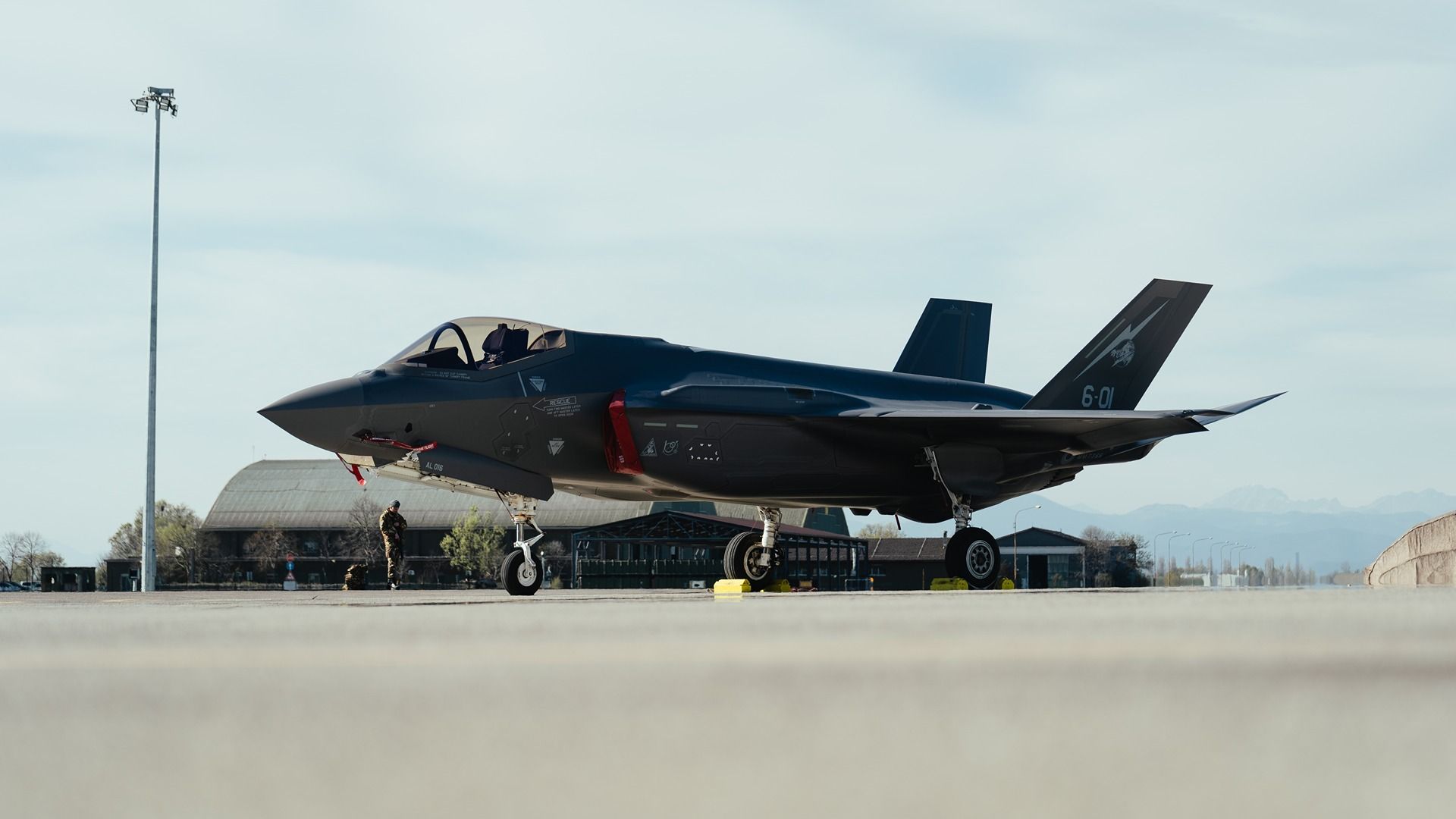
On September 19, 2025, NATO intercepted three Russian fighter jets that unlawfully entered Estonian airspace, marking a significant escalation in military tensions in the region. The Russian MiG-31 fighters remained in Estonian airspace for nearly 12 minutes before Italian F-35 aircraft, part of NATO’s Eastern Sentry operation, responded and compelled the Russian jets to retreat. This incident represents the fourth violation of Estonian airspace by Russia this year, prompting Prime Minister Kristen Michal to call for NATO Article 4 consultations, a provision allowing member states to discuss security threats collectively.
Escalating Tensions in Eastern Europe
The recent incursion into Estonian airspace is part of a broader pattern of increasingly bold military maneuvers by Russia along NATO’s eastern flank. Just a week prior, Polish airspace was violated by 19 Russian drones, followed by two Russian fighter jets conducting a low-level pass over a Baltic Sea oil platform operated by the Polish company Petrobaltic. This pattern underscores a troubling trend, as multiple drone incursions have also occurred in Lithuanian and Latvian airspace over the summer.
Major Taavi Karotamm, spokesperson for the Estonian Defense Forces, reported that the Russian aircraft flew parallel to the Estonian border without approaching the capital, Tallinn. In response to this aggressive action, not only were Italian F-35s scrambled, but both Sweden and Finland also deployed rapid response aircraft to the region. Estonia’s Foreign Minister Margus Tsahkna commented on the situation, stating, “Russia has already violated Estonia’s airspace four times this year, which in itself is unacceptable. But today’s incursion, involving three fighter aircraft entering our airspace, is unprecedentedly brazen.”
International Reactions and Implications
The violation has drawn significant international attention, including comments from Donald Trump, the President of the United States. Speaking from the Oval Office, Trump expressed concern regarding the incident, stating that it could lead to “big trouble.” He acknowledged the ongoing challenges in addressing the conflict between Russia and Ukraine but indicated a readiness to impose additional sanctions on Russia, particularly if NATO countries reduce their purchases of Russian oil.
In a show of solidarity with Estonia, Ursula von der Leyen, President of the European Commission, affirmed that Europe stands firmly with Estonia in light of Russia’s latest actions. She emphasized that Europe would respond to “every provocation with determination” while committing to strengthening NATO’s eastern flank.
The timing of these aggressive incursions is noteworthy, occurring shortly after the United States lifted certain sanctions on Belarus’ national airline, Belavia. This move has raised questions about the potential normalization of relations with Belarus, a close ally of Russia. The lifting of sanctions coincided with Belarus’ decision to release 52 political prisoners, leading to speculation about a thaw in US-Belarus relations.
Since 2021, Belavia has faced sanctions from the US and EU following the controversial diversion of a Ryanair flight that resulted in the arrest of opposition journalist Raman Pratasevich. These sanctions have significantly restricted the airline’s operations, including prohibiting access to Western-made aircraft and maintenance services.
As tensions continue to rise in Eastern Europe, the international community remains vigilant, monitoring developments closely. The situation highlights the delicate balance of power in the region and underscores the importance of unity among NATO allies in the face of aggression.
-

 Politics4 weeks ago
Politics4 weeks agoSecwepemc First Nation Seeks Aboriginal Title Over Kamloops Area
-

 World5 months ago
World5 months agoScientists Unearth Ancient Antarctic Ice to Unlock Climate Secrets
-

 Entertainment5 months ago
Entertainment5 months agoTrump and McCormick to Announce $70 Billion Energy Investments
-

 Science5 months ago
Science5 months agoFour Astronauts Return to Earth After International Space Station Mission
-

 Lifestyle5 months ago
Lifestyle5 months agoTransLink Launches Food Truck Program to Boost Revenue in Vancouver
-

 Technology3 months ago
Technology3 months agoApple Notes Enhances Functionality with Markdown Support in macOS 26
-

 Lifestyle3 months ago
Lifestyle3 months agoManitoba’s Burger Champion Shines Again Amid Dining Innovations
-

 Top Stories2 months ago
Top Stories2 months agoUrgent Update: Fatal Crash on Highway 99 Claims Life of Pitt Meadows Man
-

 Politics4 months ago
Politics4 months agoUkrainian Tennis Star Elina Svitolina Faces Death Threats Online
-

 Sports5 months ago
Sports5 months agoSearch Underway for Missing Hunter Amid Hokkaido Bear Emergency
-

 Politics5 months ago
Politics5 months agoCarney Engages First Nations Leaders at Development Law Summit
-

 Technology5 months ago
Technology5 months agoFrosthaven Launches Early Access on July 31, 2025



